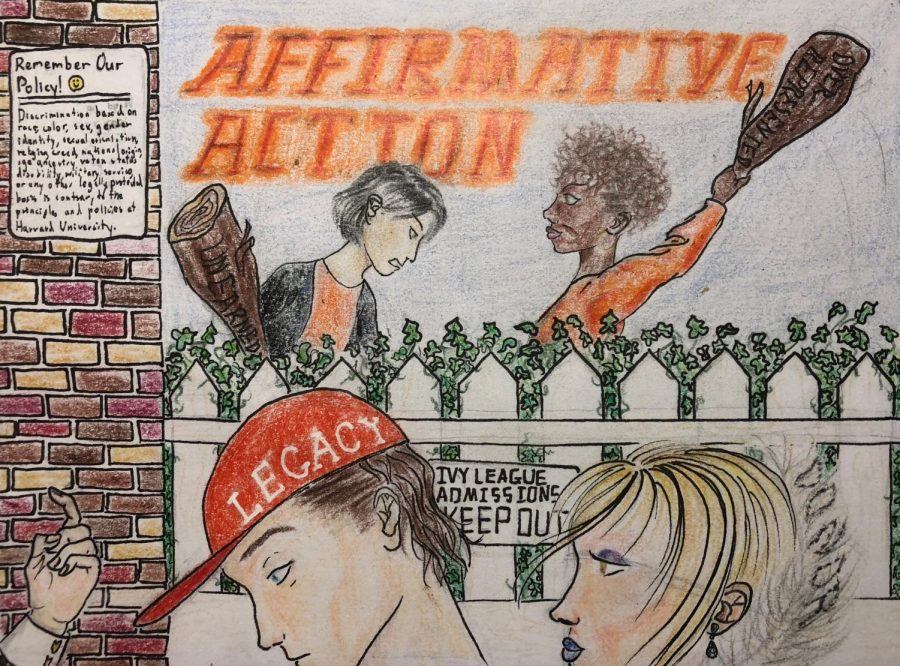Affirmative Action
Affirmative Action is a hotly debated topic, and rightly so. However, it often obscures much greater issues by pitting minority groups against one another.
A scene at the Harvard Admissions Office: the rich and advantaged are being led through the back door while the victims bicker.
Affirmative Action is defined as “the practice or policy of favoring individuals belonging to groups known to have been discriminated against previously.” according to the Oxford Dictionary. The practice was first applied in the 1900’s to limit the amount of Jewish students allowed into universities.
Nowadays, the debate is more varied: those for affirmative action state that affirmative action is necessary to promoting diversity and leveling the playing field for disadvantaged individuals. Those against most often argue that doing so is discriminating against high-achieving students (the most often used example are Asian-Americans).
Rebuttals against the arguments respectively are: affirmative action doesn’t address the root causes of inequalities and are giving unfair advantages to less qualified students. The other side says that Asian-Americans aren’t actually hurt by minority students, Asian-Americans are also divided on this subject, Affirmative Action helps some Asian-American groups, and that racial quotas don’t actually exist.
These claims all have their own validity, but it pits Asian-Americans against Blacks and Hispanics and other minority groups while ignoring those that take up a much higher percentage of admission slots. Legacy students, students whose families have donated money, recruited athletes are all predominantly white and have a much higher probability of being admitted. The college admissions scandal is a perfect example of how the rich can skew admissions in their favor.
The right opinion on Affirmative Action is your own to make. However it’s important to look at this issue in its entirety and not just take things at face value.
Your donation will support the student journalists of West High School. Your contribution will allow us to purchase Scholarship Yearbooks, newsroom equipment and cover our annual website hosting costs.

(she/her) This is Athena's third year on the WSS print staff, and as a senior, their last year. She is entertainment editor, and enjoys all things satire,...











